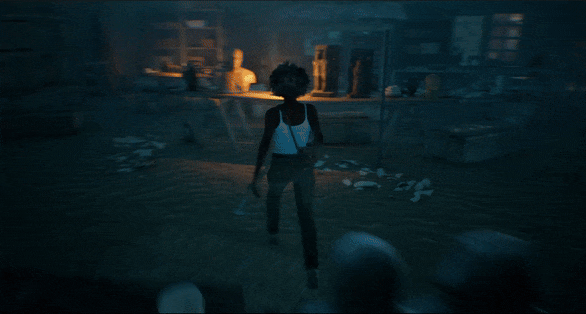About
Bringing Immersive Cultural Heritage Experiences to Gaming, Classrooms, and Libraries around the World
We want to inspire and fascinate our users by displaying history in as vivid imagination as we've witnessed it.
We build immersive experiences for gaming, education, and real-world cultural heritage preservation. Mused brings world cultures to life in classrooms, supporting both learning and archaeological preservation.
We empower the local communities taking care of the monuments where we work by providing them with training and financial resources to maintain and preserve their cultural heritage.
Our Mission
Our primary mission is to inspire our users -- so they perceive and are fascinated by history as much as we have been.
As a part of this, we hope to use technology to support non-profit organizations and conservation projects to augmented their grant funding lifecycles by publishing games and educational resources about their work.
Our role as technologist and digital humanitists is to empower educators and cultural heritage workers around the world to tell their stories and connect with their audiences.
Our Impact
So far we've worked on over 200 projects in 30+ countries. More of our is coming out month-by-month as the educational and interpretative resources are created along with the 3d content.
- Views of virtual tours
- 20,000,000+
- Heritage sites documented
- 220+
- Local communities trained
- 16
- Grant funding for research partners
- $3mm+
What Sets Us Apart
We Believe in Empowering Educators with Comprehensive, Curriculum-Aligned Resources.
We work directly in the classroom with teachers in multiple countries to understand their needs and build teaching materials that they love!
We offer curriculum-aligned 3D resources and lesson plans that meet the needs of diverse learning styles, ensuring that every student can engage with history in an immersive and meaningful way. Used around the world, our resources have proven to support teachers in transforming traditional lessons into dynamic, interactive experiences.
We Value Ethical Cultural Heritage Preservation and Community Empowerment.
We believe that cultural heritage belongs to the communities that preserve it. By partnering with local communities, we not only help safeguard their heritage but also create sustainable jobs in digital preservation.
Our approach involves providing hands-on training in cutting-edge 3D capture technology, fostering self-sufficiency and long-term preservation efforts. We are committed to promoting ethical practices that ensure local communities have ownership and control over their cultural heritage, while sharing it with the world.
We Innovate by Merging Education with Engaging Gaming to Transform Learning and Archaeological Funding.
We believe that education and entertainment can coexist to produce powerful learning outcomes. Our educational games are built using real 3D cultural heritage captures, allowing students to explore historically accurate environments while learning.
These games also create a sustainable funding model for archaeological projects, turning gameplay into real-world support for ongoing discoveries. We are dedicated to developing tools that not only educate but also contribute to the preservation and funding of cultural heritage.
Above everything, we want to inspire the world with the monuments we work at the same way that they've inspired us!
Our Work Elsewhere
You can also see our work on Google Arts and Culture, with the American Research Center in Egypt, the Egyptian Ministry of Tourism and Antiquities, and in various museums and exhibitions around the world, such as PBS, Harvard University, the De Young Museum in San Francisco and Smithsonian Institution and many others.
Our resources are featured in various print publications of teaching resources in English, Spanish, French, and Arabic as well.
-
YouTube

Zapier

Twitter
-

MailChimp

Facebook

Instagram

Pinterest
-
Unsplash
AirTable

TeachersPayTeachers
-

Canvas

Udemy
-

ArchivesSpace

Khan Academy
-

Omeka
-

IIIF
-

edX
-

Google Classroom
-

Matterport
-

Internet Archive
-

Udacity

Sketchfab
-

Meta

Google Analytics
-

GitHub

GallerySystems
Axiell
-

Coursera

Teachable

Newsela

Course Hero
-

DSpace

Intercom

HubSpot
Integrations
Will it work with my existing tools?
We’ve worked with museums and heritage sites around the world and integrate with a plethora of humanities and educational technologies.
✉️ Contact us to ask about your integrationMeet the Muses
The amazing and excellent engineers, cultural heritage workers, designers, and artists that bring 3d captures to your desktop.
-
Luke Hollis
Founder / Software Engineer
-
Rishab Nanda
3d Art and Creative Director
-
Gina Salama
3d Capture and Epigraphy
-
Tessa Litecky
Exhibition Producer
-
Natalya Stanke
Archives and Ontologies
-
Sally El-Sabbahy
Advisor, Communications
-
Andreas Kostopolous
Advisor, Digital Archives
-
Per-Project Collaborators
On larger projects, collaborators are listed on each individual project About page







